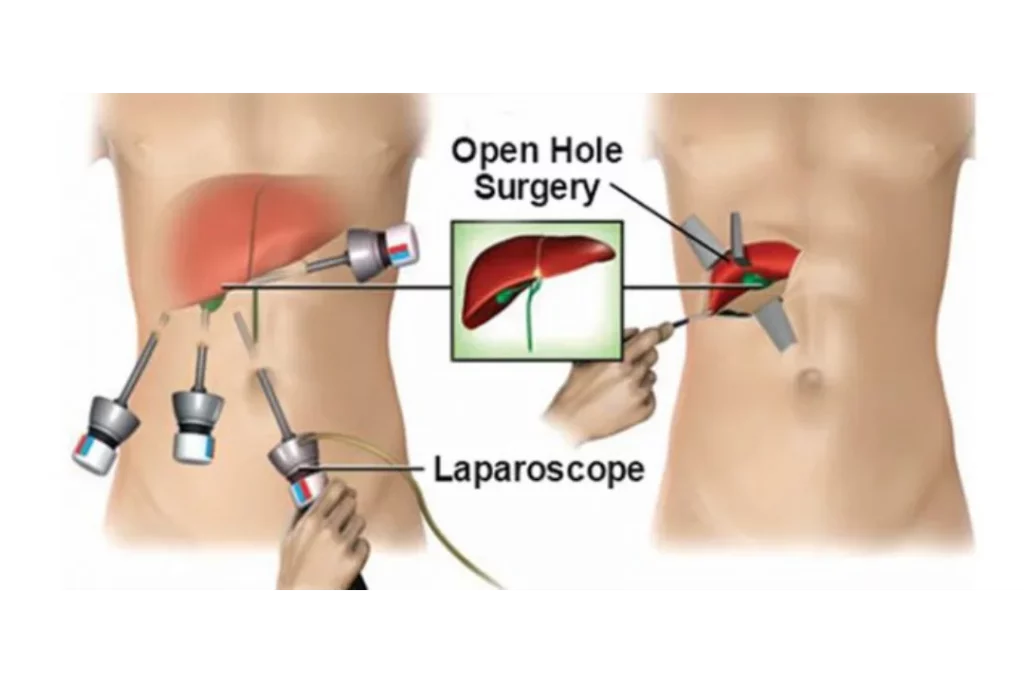
Severe Morning Sickness
Feeling Sick All Day in Pregnancy? These Tips Might Change Everything ( Even Permanent Relief) Pregnancy is a blessing, but also a trial in the

“Best Exercise During Pregnancy: Empowering Moms, Nurturing Babies!”
Pregnancy is a transformative journey that brings with it a myriad of changes and challenges for expectant mothers. While the focus often lies on nurturing the growing life within, it’s equally vital to consider the health and well-being of the mother. The importance of staying active during pregnancy cannot be overstated, as it not only promotes physical fitness but also contributes significantly to mental and emotional wellness.
One key aspect of a healthy pregnancy is exercise. Incorporating exercise into your routine can provide numerous benefits for both you and your baby. In this comprehensive guide, we will discuss the best exercise during pregnancy for normal delivery, seeking out the most effective and safe routines that can help expectant mothers navigate this incredible period of their lives with grace and vitality.

Pregnancy is a miraculous journey marked by the creation of life within the confines of a woman’s body. As this incredible transformation unfolds, so do numerous physiological changes that extend far beyond the visible baby bump. Amidst the excitement and anticipation, it’s easy to overlook the critical role that exercise plays in nurturing the health of both the expectant mother and her developing baby. Let’s delve into the profound importance of exercise during this delicate phase of life:
The decision to engage in regular exercise during pregnancy opens the door to a myriad of advantages for both the expectant mother and her developing baby. Let’s explore these remarkable benefits in comprehensive detail:
A strong cardiovascular system is crucial during pregnancy, as it ensures an adequate supply of blood and oxygen to support the growing fetus. Regular exercise strengthens the heart, enhances blood circulation, and contributes to the overall cardiovascular health of both you and your baby.
Pregnancy naturally entails weight gain, but exercise empowers you to manage this process in a healthy and controlled manner. Maintaining a healthy weight reduces the risk of complications such as gestational diabetes, gestational hypertension, and the need for a cesarean section. By achieving a balanced weight gain, you alleviate undue stress on your body and joints.
Pregnancy places added strain on the muscles, especially those in the core and pelvic floor. Engaging in prenatal exercises, like pelvic tilts and Kegel exercises, helps maintain muscle tone and strength, reducing the risk of discomfort and complications. Strong core muscles also support your spine as it adapts to the changing weight distribution.
Pregnancy often brings with it a host of discomforts, including back pain, swollen ankles, and sciatica. Exercise can be a potent remedy, as it enhances flexibility, strengthens the back and abdominal muscles, and promotes better posture. These benefits can alleviate common pregnancy-related pains and discomforts.
As your body adapts to the growing baby, maintaining proper posture can become challenging. Exercise, particularly those targeting the back and core, can help you maintain good posture. This not only reduces strain on your back and neck but also contributes to your overall comfort.
Pregnancy is a time of excitement but can also bring anxiety and stress. Exercise acts as a natural stress reliever, triggering the release of endorphins. These feel-good hormones help reduce stress and promote a more positive emotional state, enhancing your overall well-being.
Finding a comfortable sleeping position becomes increasingly challenging as your pregnancy progresses. Regular physical activity regulates sleep patterns, leading to more restful nights and reduced incidence of insomnia.
Maintaining a physically active lifestyle can help regulate blood sugar levels, reducing the likelihood of developing gestational diabetes. Controlling blood sugar is essential for both your health and the healthy development of your baby.
Digestive issues such as constipation are common during pregnancy. Exercise promotes healthy digestion by stimulating bowel movements and relieving discomfort.
It’s not uncommon to experience fatigue during pregnancy, but regular exercise can help combat this. Engaging in physical activity can boost your energy levels, enabling you to stay active and engaged throughout your pregnancy.
Women who exercise during pregnancy often experience quicker postpartum recoveries. This is because exercise helps maintain muscle tone and flexibility, aiding in the restoration of your pre-pregnancy body.
The release of endorphins through exercise can effectively combat mood swings and reduce the risk of antenatal depression. Maintaining a positive outlook is essential for a healthy pregnancy journey.

Maintaining cardiovascular fitness during pregnancy is a cornerstone of a healthy and comfortable journey to motherhood. However, choosing the right cardio exercises that prioritize safety and well-being can be challenging. In this section, we explore the best cardio exercises tailored specifically for expectant mothers.
The role of cardiovascular exercise during pregnancy extends far beyond physical fitness; it is a cornerstone of maternal health. Here are compelling reasons why cardiovascular exercise should be integrated into your prenatal routine:
Ensuring both your safety and that of your developing baby is paramount. Low-impact cardio exercises strike the ideal balance, providing the benefits of aerobic workouts while minimizing stress on your joints. Here, we introduce you to some low-impact cardio options perfectly suited for expectant mothers:

Choosing the optimal time for exercise during pregnancy is a crucial consideration. Your body’s response to physical activity can vary depending on the time of day, and aligning your workouts with your natural rhythms can enhance the benefits while ensuring your safety. Let’s delve into the discussion of the ideal time to exercise during pregnancy:
Selecting the most suitable exercise time is a mindful choice that can positively impact your fitness, energy levels, and overall pregnancy experience.
– Body Temperature: Your body temperature tends to be lower in the morning and gradually increases throughout the day. This may influence your perceived effort during workouts. Be attentive to how your body responds to temperature fluctuations and adjust your exercise intensity accordingly.
– Energy Levels: Pay attention to your natural energy peaks and dips. Morning workouts may be more energizing, but some may find themselves more motivated and alert in the afternoon or evening. Listen to your body’s signals and choose the time that aligns with your energy patterns.
– Hydration and Nutrition: Regardless of the time you choose, staying hydrated and having a light snack before exercising is crucial. Morning exercisers may benefit from a quick energy boost to kick-start their metabolism, while afternoon or evening workouts should be timed around meals to ensure adequate energy levels.
Balancing the demands of pregnancy with a busy lifestyle can be challenging. However, with proper planning and determination, you can find ways to prioritize exercise during this transformative phase:

The first trimester of pregnancy is a delicate and transformative period when the body undergoes numerous changes to accommodate the growing life within. Exercising during this phase can lay a strong foundation for a healthy pregnancy journey. In this section, we explore the significance of best exercise during pregnancy and introduce safe and effective options for early pregnancy.
Engaging in suitable exercises during the first trimester can contribute to physical well-being, alleviate discomfort, and foster a positive start to your pregnancy experience.
Exercising during the first trimester is laden with advantages, owing to the following reasons:
Following are some of the best exercise during pregnancy:
Prenatal yoga is a gentle and mindful practice that combines stretching, breathing, and relaxation techniques. It improves flexibility, enhances posture, and cultivates a sense of calm—an invaluable asset during early pregnancy.
Pelvic floor exercises, also known as Kegels, are essential during pregnancy. These exercises strengthen the muscles that support the bladder, uterus, and bowel, aiding in improved urinary control and prevention of incontinence.
Modified strength training is an excellent way to maintain muscle tone while respecting the changes your body is undergoing. It’s vital to use lighter weights and focus on proper form to prevent injury. Concentrating on exercises that target the back, shoulders, and legs can enhance overall body strength and support.

The second trimester of pregnancy is often described as the “golden trimester,” marked by increased energy and a reduction in early pregnancy symptoms. This is an ideal time to focus on maintaining your fitness and well-being. In this section, we explore the benefits of exercising during the second trimester and introduce suitable exercises for this middle stage of pregnancy.
Exercising during the second trimester can enhance physical health, boost mental well-being, and prepare the body for the demands of late pregnancy and childbirth.
Exercising during the second trimester offers a multitude of benefits:
Prenatal Pilates focuses on core strength, flexibility, and posture. It’s an excellent choice for the second trimester as it helps maintain abdominal and back muscle tone while emphasizing controlled movements that protect the spine.
Low-impact aerobics classes designed for expectant mothers provide cardiovascular benefits without placing undue stress on joints. These classes often incorporate dance-inspired movements, offering an enjoyable workout experience.
Kegel exercises are essential during pregnancy to strengthen the pelvic floor muscles. These exercises can help prevent urinary incontinence and provide support for the growing uterus. Regular practice in the second trimester can be particularly beneficial.

The third trimester of pregnancy, the home stretch, brings with it the physical demands and anticipation of childbirth. Staying active during this period holds immense significance for both your well-being and the preparation of your body for labor. In this section, we explore the importance of best exercise during pregnancy in the third trimester and introduce safe and effective exercises for this late stage of pregnancy.
Engaging in suitable exercises during the third trimester can promote physical comfort, enhance mental resilience, and contribute to a positive transition into motherhood.
As you approach the final stretch of pregnancy, exercising in the third trimester offers a host of benefits:
Swimming during the third trimester provides a buoyant and low-impact workout. The water supports your body weight, relieving pressure on joints and the pelvic floor. Swimming can alleviate swelling, promote circulation, and offer relaxation.
Water aerobics classes designed for late pregnancy provide a comprehensive cardiovascular workout. The water’s resistance adds a gentle challenge to your movements, while the buoyancy ensures minimal impact on your joints.
As you approach the end of your pregnancy, gentle stretching and relaxation exercises become especially beneficial. These exercises can alleviate tension, reduce discomfort, and promote relaxation, helping you prepare both mentally and physically for childbirth.
In conclusion, exercising during pregnancy is highly beneficial for both the expecting mother and the baby. Regular exercise during pregnancy is essential for maintaining overall well-being and ensuring a healthy pregnancy journey. From nurturing cardiovascular health to fostering emotional resilience, from managing gestational weight to relieving discomfort, exercise during pregnancy offers a multitude of blessings.
There are numerous exercises suitable and beneficial for pregnant women, but always under guidance. Prenatal yoga, swimming, brisk walking, stationary biking, and straightforward strength exercises can well-fit during pregnancy. Low-impact exercises reduce strains and injury risk. Moreover, always maintain proper hydration and never overstrain.
Yes, there are certainly workout forms that could be detrimental for pregnant women, including high-intensity training, contact sports, activities with a risk of falling (such as cycling or horse riding), hot yoga or pilates, and deep-diving underwater sports.
This slightly varies depending upon the individual’s fitness level and doctor’s recommendations. Still, generally, it’s safe for most pregnant women to exercise for 30 minutes per day, approximately four to five times a week. Always ensure to discuss with your healthcare provider before starting up an exercise regimen.
Regular movement can immensely help during pregnancy. It can boost mood, improve sleep, reduce pregnancy discomfort, increase stamina for labor and delivery, enhance muscle strength, and diminish the risk of gestational diabetes and pre-eclampsia.
Aside from certain high-risk and overall intense activities, as mentioned earlier, most general exercises won’t harm a developing baby. In fact, a reasonable amount of physical activity can lead to a healthier pregnancy and has even been linked to smoother labor. The key lies in finding the balance between vigorous and mellow exercises and paying heed to your body’s feedback. If any discomfort, dizziness, or shortness of breath arises, it’s crucial to pause the activity and consult with your healthcare provider.

Feeling Sick All Day in Pregnancy? These Tips Might Change Everything ( Even Permanent Relief) Pregnancy is a blessing, but also a trial in the

Trimester 1 Diet Plan: What to Eat in the First 3 Months of Pregnancy & Help Your Baby Grow The moment you learn you’re pregnant,

HOW TO RECOVER AFTER A CESAREAN BIRTH? WHAT TO DO DURING THIS RECOVERY TIME, AND HOW TO DEAL WITH THE CHALLENGES & RISKS! What is

A Thorough Deep Dive into the Breadth of Gynecology Problems Involving the Ovaries, Uterus, Vagina and More “Get an extensive knowledge of gynecology problems and

Get a comprehensive guide on open sopen surgery vs laparoscopic surgery in order to get a better surgical approach “Acquire the knowledge of open surgery

Best Exercise during Pregnancy: Your Path to a Healthier You! “Best Exercise During Pregnancy: Empowering Moms, Nurturing Babies!” Pregnancy is a transformative journey that brings
Please provide your details below, and we will contact you after you schedule your appointment.